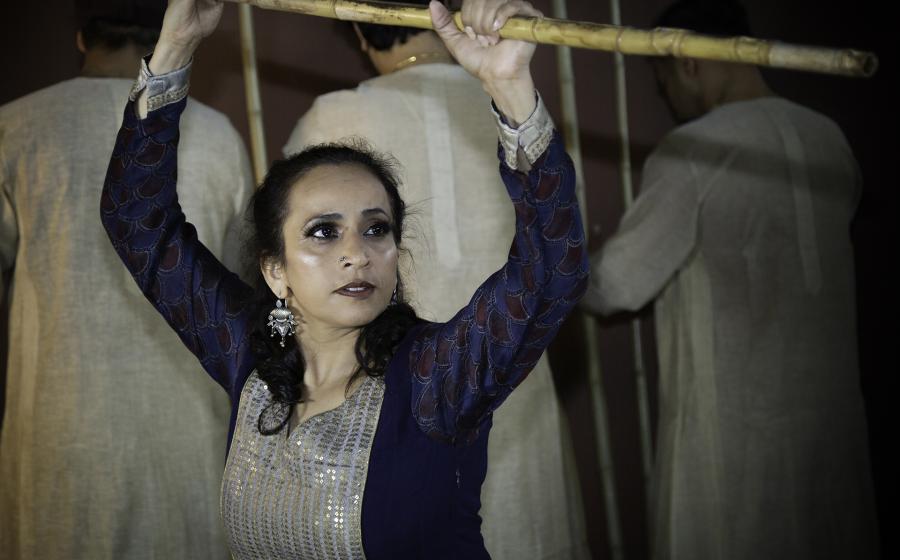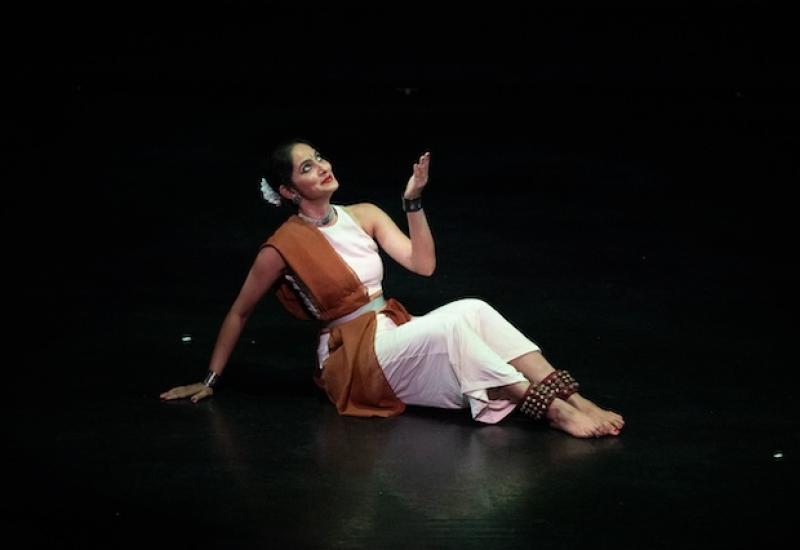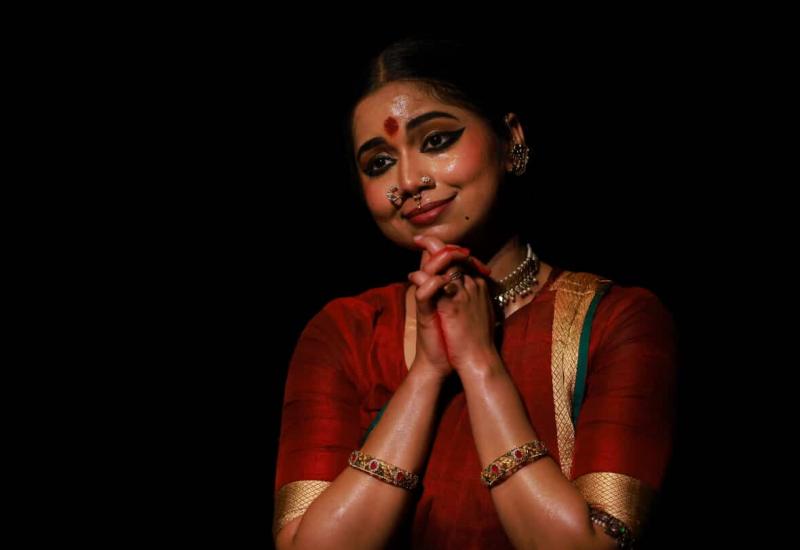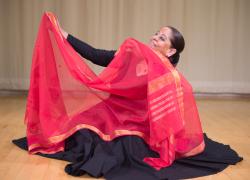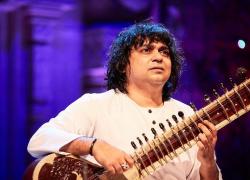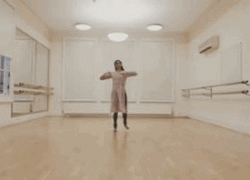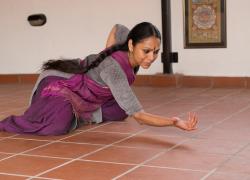ROOH: Within Her
Venue MK, Milton Keynes
26 October 2024
Reviewed by Donald Hutera
The title of Urja Desai Thakore's latest work for Pagrav Dance Company (soon to mark the 20th anniversary of its inception) translates from Gujarati as 'essence.' Created as a solo for herself, this collage of dance, text and music is, in essence, designed as an inspiring tribute to the courage, resilience and generosity of women - those she has either known in her own life, or known of from literature and contemporary history.
The kinetic style is kathak, Thakore's chosen form of expression. The text, which is mainly recorded, is derived principally from three sources. One is a brace of poems, Tamil and Gujarati, which together span the 2nd to the 20th century. Another is conversations between Thakore and her school-age daughter Mahika, which concern members of their family as well as activists involved in Chipko, an eco-feminist movement initiated in India half a century ago. Lastly, there is a second pair of poems by, respectively, Chidananda Desai and the show's dramaturg, Karthika Nair.
Sincerely personal, as well as thematically and artistically ambitious, 'ROOH' has reach and scope. If it sometimes felt just a mite too fresh out of the gate at its premiere performance in Milton Keynes, where Thakore is based, chances are it will grow and deepen when it starts touring in the UK in the new year.
The music, by Alap Desai, is played live by four musicians who (as was the case with Pagrav's recent and still-touring production Kattam Katti) also, albeit fairly minimally, move about the stage rather than remain statically planted on one side of it. The set and lighting designer, Willy Cessa, has devised a dramatic and changeable landscape for Thakore and them to occupy. On either side of the playing area stand or hang thin wooden poles, like stalagmites and stalactites.There are also bamboo-like screens that are later rolled up into tall, upright scrolls.
The opening segment functions like a semi-abtract, word-free prologue, with Thakore initially seen in silhouette and wielding a stick like a warrior with a sword. The musicians emerge gradually, posing some sort of threat that puts her on the defensive. Yet such is this powerfully robust middled-aged woman's strength of presence that we never fear for her safety. The scenario shifts and, after an invocation-like gesture with the stick, she mimes what seems to be the warm tending of a pair of children. Spoiler alert: early on the six suspended sticks fall, signalling disaster and grief. It's a bit of a shock. The small charges she was looking after appear to have been lost, their remains cradled and caressed in the shape of, again, a stick. Slowly Thakore recovers, with the help of musicians who are now gently helpful rather than vaguely menacing.
Thakore is a patently never less than capable, rather than dazzling dancer.This earth mother figure is also adept at embodying a range of emotive states - fierce or tender, sweet or sorrowful. Such skill serves her in good stead as the hour-long performance shifts again into text-based sequences - one an implied questioning of the morality of war as a mother searches the battlefield for her boy-soldier's corpse, another a depiction of a stout-hearted adolescent girl's defence of her village from a lion (a cue for Thakore to portray both the young woman and the stylised clawed beast).
Our attention then turns to Thakore's own lineage. A voice-over with her daughter about the generations of women just above them, their circumstances and accomplishments, accompanies Thakore's use of one of the symbolically all-purpose sticks to write on the floor and in the air - an active representation of the creativity within their family lineage. This, in turn, leads to the Chipko reference with which the work somewhat arbitrarily ends.
At this state in its evolution 'ROOH' is not yet a piercing piece of work. Again, that will, ideally, come. I wonder, too, how widely accessible the show wants to be. As a Westerner especially I would have appreciated, during the performance, subtitled translations of at least some of the non-English texts I was hearing rather than needing to seek them out myself digitially later on. To its credit, however, the production encompasses its varied 'herstories' with a light touch, lacing together ideas about language and communication, sacrifice and fortitude, protection and protest. And that may be its most significant takeaway. As an intelligent and meaningful showcase for a mature artist, the show asks us to look, listen and learn.

